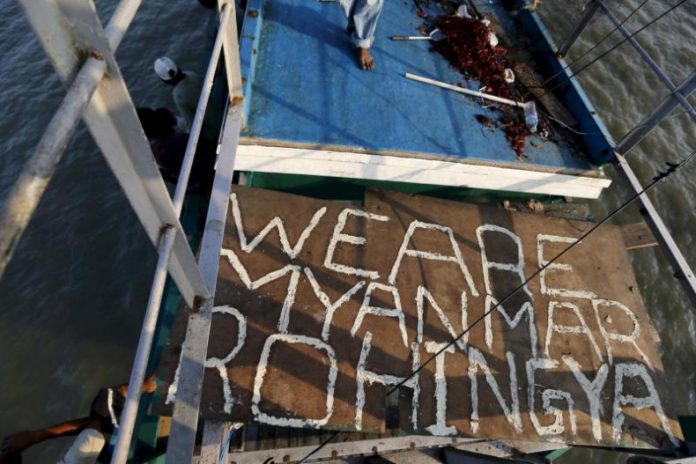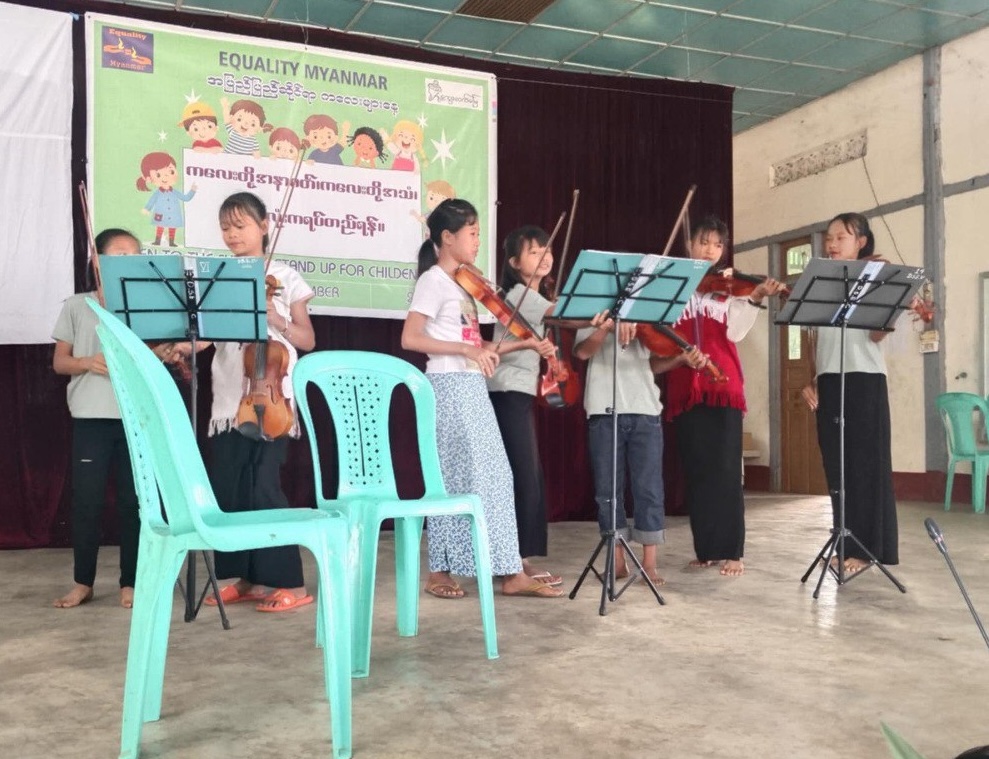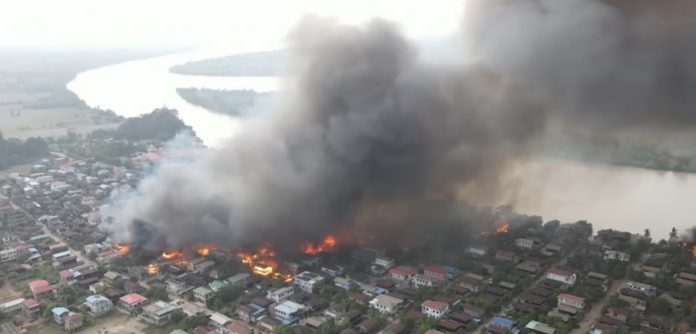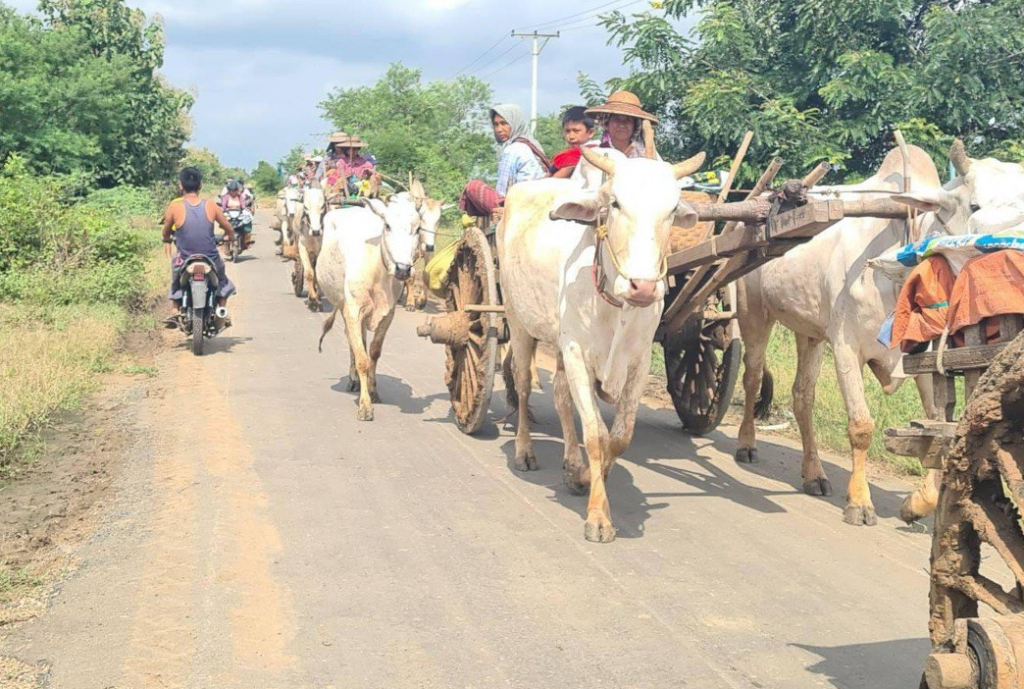By Antonio Graceffo for Geopolitical Monitor
As of late October, pro-democracy resistance fighters in Myanmar had advanced to within a few kilometers of Mandalay, the country’s second-largest city. This marks a significant shift in the Myanmar civil war, a conflict that has hitherto been concentrated in the jungles and mountains of ethnic states, where groups like the Karen National Liberation Army, Karenni Army, and Kachin Independence Army (KIA) initially focused on reclaiming territory in and around their ancestral homelands. The scope of the fighting expanded dramatically in October 2023, when several major ethnic armies joined together to recapture sweeping tracts of the Myanmar countryside, gradually narrowing the zone of Tatmadaw control to major urban centers.
The approach on Mandalay represents a new phase of the Myanmar civil war. For one it sends a powerful message to the ruling State Administration Council (SAC) that the rebels remain united and determined to take the fight to the country’s economic and political heartland. Two, it underscores the Tatmadaw’s confinement to urban areas – the result of a year of tactical retreats – and the ambition on the part of the rebels to engage in urban warfare despite the considerable risks involved.
Dry season brings new battlefield realities
Despite the numerous military successes of the past year, namely the recapturing of swathes of rural territory, Myanmar’s pro-democracy rebels continue to struggle against the Tatmadaw’s air superiority. Attack helicopters, jet fighters, and drones now account for a large portion of casualties, with civilians increasingly among the victims. As November ushers in the transition from the rainy season to winter, drier weather brings clearer skies, potentially resonating on the battlefield.
David Eubank, head of the frontline aid group Free Burma Rangers and a veteran of over 25 years in this conflict, commented to the author that the shift “makes it easier for bombing runs and easier transport for resupplies and reinforcements… Improved weather favors the government military.” This changing season raises concerns about whether the rebels can capture Mandalay, as the improved weather conditions now play into the Tatmadaw’s hands.
This shifting military dynamic is echoed by a Karen refugee who would prefer to remain anonymous: “Now, the Tatmadaw has computers and GPS. They don’t even need to look. They can fly at night, in the dark and drop bombs directly on [villages].”
Once the rainy season comes to a close, the Tatmadaw typically launches an offensive; and in the likely event of a repeat this year, they can be expected to field a formidable force. Since the introduction of military conscription, the Tatmadaw has added at least 30,000 troops to its ranks—more than the total individual fighting strength of many resistance armies.
Additionally, the Tatmadaw continues to receive weapons and aircraft from Russia and China. Another disadvantage for the resistance is the changing terrain. Early on, ethnic armed organizations fought in remote areas where they have decades of experience, employing guerrilla tactics to outmaneuver a stronger enemy. Now, however, fighting is shifting to an urban context, a setting for which they are far less prepared.
According to representatives from the Karenni National Progressive Party (KNPP), the leading political organization of the Karenni people aligned with the National Unity Government (NUG) — the democratic shadow government — Tatmadaw soldiers are entrenched in their remaining strongholds, protected by hundreds of landmines and drones, and defended by jammers that neutralize the resistance’s homemade drones.
Another disadvantage for the resistance as they approach the cities like Mandalay is that their ranks include members of the People’s Defense Forces (PDF), composed mainly of educated professionals and city dwellers who joined the resistance after the 2021 coup. While their commitment to the cause is strong, these PDF members lack the combat experience of the ethnic armed organizations.
The dry season and the composition of forces may provide an advantage to the Tatmadaw, but according to Eubank, this advantage won’t necessarily be decisive: “The resistance can also benefit from better roads for their own resupplies, and the dry season allows them to deploy drones more effectively.” Furthermore, while the dry season has provided the Tatmadaw with an edge in the past, there’s reason to believe that the dynamic could be changing in 2024.
The resistance now has its own drones and has captured more territory with road access for trucks, helping to offset some of the Tatmadaw’s previous advantages at the end of the rainy season. The Tatmadaw, for instance, generally can’t resupply by land anymore, as their convoys are at risk of ambush and capture: “They can’t move in anything less than a battalion-sized unit, and they need air cover,” according to Eubank. This leaves the Tatmadaw heavily reliant on air support for both offensive and resupply operations.
The evolving tactics of the Myanmar civil war
With so many moving parts and unknown variables, it is exceedingly difficult to predict what will happen next or when either side might collapse. The evolution of drone warfare provides a good illustration of how quickly things can change. Initially, when college students, engineering students, and IT experts fled the cities and joined the resistance as drone makers, the resistance held an advantage in drones.
Now, however, it is believed that the Tatmadaw is receiving instruction from Russia, based on experiences gained in the Ukraine war. Earlier this year, the Tatmadaw established a directorate for unmanned aerial warfare, which, along with more advanced technology and a larger number of drones supplied not only by Russia and China but also possibly by Iran and North Korea, has given the junta air superiority, even in the drone space.
For the resistance, unity is their strongest weapon. Myanmar is witnessing the rise of a “network insurgency,” marked by cooperation and mutual support among various ethnic armies and People’s Defense Forces (PDFs), all united by one shared objective: the dismantling of the State Administration Council (SAC) and the defeat of the Myanmar military. On this, Eubank notes that “what matters most is whether the resistance can remain united, coordinated, and persistent in wearing down the military while also reaching out to those caught in the middle.
Some may dislike the dictatorship but aren’t actively supporting the resistance; gaining their quiet support is crucial, too.” Currently, some large, powerful ethnic armed organizations — most notably the Shan State Army (SSA) and the United Wa State Army (UWSA)—are in a ceasefire with the government. If they were to join the rebels, they could be a tremendous asset; however, differing political goals and objectives have kept them on the sidelines of the civil war.
Finally, another significant advantage of the resistance movement is motivation. The draconian conscription laws of the past year have forced tens of thousands of young men and women into the junta’s army—many of whom do not want to be there and, in many cases, despise the junta, its government, and its military.
In contrast, the ethnic armed organizations and People’s Defense Forces are fighting for their homes and families. They know what they are fighting for; they understand what they have lost; and the dream of establishing a democratic republic sustains them. This motivation may push the resistance to continue fighting despite mounting attrition. In some ways, the Myanmar civil war has devolved into a large-scale, deadly game of chicken, one where each side is determined to make the other blink first.










